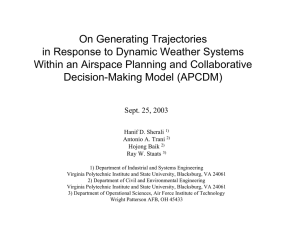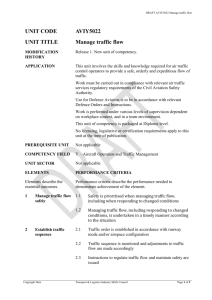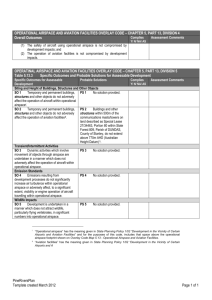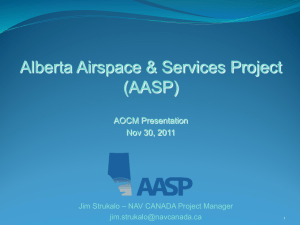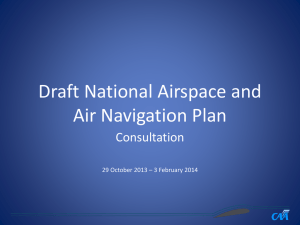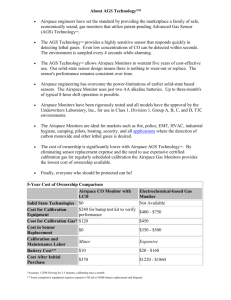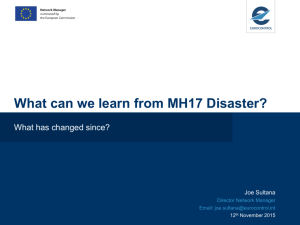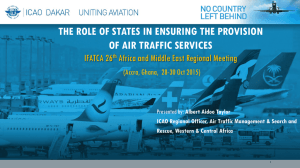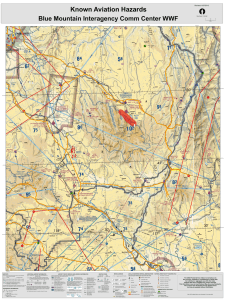Airspace Allocation and Use
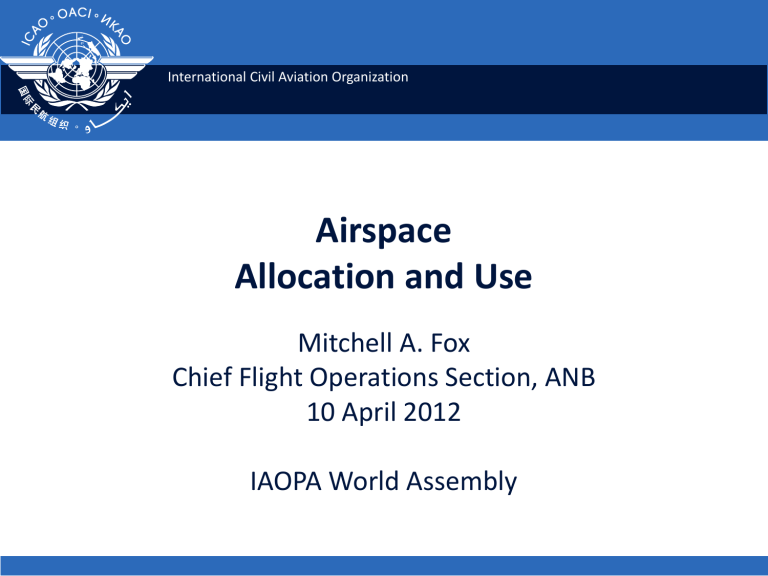
International Civil Aviation Organization
Airspace
Allocation and Use
Mitchell A. Fox
Chief Flight Operations Section, ANB
10 April 2012
IAOPA World Assembly
Annex 11, Chapter 2.6 – Classification of airspaces
• Class A to G
• Service provided and flight requirements
• Well known!
• Para. 2.6.2: “States shall select those airspaces classes appropriate to their needs”
• So….what do you do?
2
What’s in the future
• SESAR – NEXGEN – the rest of the world?
• Need for global harmonization
• ICAO – Block Upgrades
3
Aviation System Block Upgrades
• Clearly defined, measurable operational improvement;
– Airborne and ground procedures necessary to make it happen; as well as new separation minimums – if applicable;
– Equipment and/or systems needed in the aircraft and on the ground, with appropriate training;
– Operational approval or certification plan; and
– Positive business case over a clearly defined time period.
• Well understood by a Global Demonstration Trial
• All synchronized to allow initial implementation
• Won’t matter when or where implemented
4
Performance
Improvement
Areas
Greener Airports
Globally
Interoperable
Systems and Data
Optimum
Capacity and
Flexible Flights
Efficient Flight
Plan
Block 0
(2013)
Block 1
(2018)
Block 2
(2023)
Block 3
(2028 & >)
Access and Equity
• Built in principle
• Improve access:
– Ensure that shared use of airspace and airports by different classes of airspace users will be significantly improved (classes defined by type of user, type of aircraft, type of flight rule); and
– where shared use is conflicting with other performance expectations
(safety, security, capacity, etc.), ensure that viable airspace/airport alternatives will be provided to satisfy the airspace users’ needs, in consultation with all affected stakeholder.
• Improve equity:
– For priority management, ensure that more options will be available than just the ‘first come first serve’ rule;
– Ensure that priority rules will always be applied in a transparent, correct manner.
6
PBN is the highest priority
• PBN can enable procedures requiring less airspace due to design flexibility and improved track containment
• Good design essential to reduce the need for
Class B/C airspace
• Key: ensure that all effected parties are brought together at the beginning of any redesign
7
International Operations
8
Planning and Implementation Regional
Groups (PIRGs)
•
•
•
Established by the Council
Develop, amend and maintain the concerned regional air navigation plans (ANPs) and assist
States in their implementation
Review air navigation deficiencies and assist
States in eliminating those deficiencies
9
ICAO Regions
Project title (Insert, Header & Footer) 10
Project title (Insert, Header & Footer) 11
Recommendations:
• Develop a strategy to lobby States for access and equity – this will need to be done on a
State-by-State basis
• Participate in the 12 th Air Navigation
Conference
• Consider observer status in the PIRGs
12

